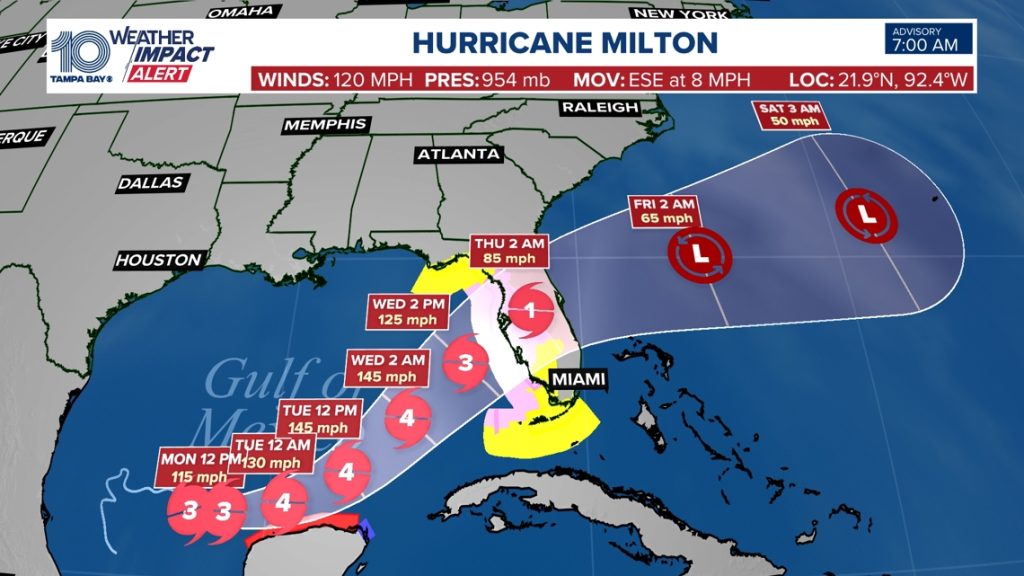Hurricane Milton, a monstrous Category 5 storm, poses a grave threat to Tampa Bay, Florida. The impending tempest comes just weeks after Hurricane Helene ravaged the same coastline, leaving a trail of destruction and hundreds dead.
Residents, still reeling from Helene’s wrath, face a devastating double whammy. Debris litters streets, homes bear the scars of the previous storm, and a palpable sense of apprehension hangs heavy in the air.
“It’s like we haven’t even begun to heal,” says John Miller, a Sarasota resident. “Another hurricane, especially a Category 5, is just… unbelievable.”
Forecasters warn of a potential direct hit on Tampa Bay, with catastrophic storm surges reaching 12 feet. Coupled with sustained hurricane-force winds, this could devastate coastal communities, trigger widespread flooding, and leave a path of utter destruction.
“This is the worst-case scenario,” warns Dr. Amelia Hernandez, a hurricane specialist with NOAA. “The combination of storm surge and powerful winds could be catastrophic. Evacuation orders are in effect, and we urge everyone in the affected areas to leave immediately.”
The urgency is compounded by the ongoing recovery from Helene. Incomplete debris removal hinders evacuation routes and complicates search and rescue efforts. Governor David Jones, at a press conference, stated, “We’re facing a double crisis. Resources are stretched thin, but we’re throwing everything at Milton’s preparation. The state is working tirelessly to ensure everyone has access to shelters and evacuation assistance.”
Power outages are a looming threat. Tampa Bay’s already-battered power grid could face extended blackouts, crippling essential services like hospitals and communication networks. This would further complicate rescue and recovery efforts.
The economic impact is staggering. Tampa Bay, a major tourist destination, could face widespread damage to businesses and infrastructure. The tourism industry, already reeling from Helene, could face a long and arduous recovery.
Beyond the immediate economic consequences, the storm’s environmental impact could be severe. Coastal ecosystems, battered by Helene, could be further devastated by Milton’s fury. Mangrove forests, crucial for storm protection and marine life habitats, are particularly vulnerable.
The storm’s potential impact on infrastructure is also a major concern. Bridges, roads, and power lines could be severely damaged or destroyed, hindering recovery efforts and isolating affected communities.
As Milton barrels closer, a sense of steely resolve mixes with apprehension in Tampa Bay. Residents are bracing for the worst, while emergency services work around the clock to prepare for the inevitable impact. The coming days will be a test of resilience for a region that has already endured so much.
In addition to the challenges mentioned above, Hurricane Milton also threatens to exacerbate existing social and economic inequalities in the region. Vulnerable populations, such as low-income families, the elderly, and people with disabilities, may face significant difficulties in evacuating and accessing essential services during and after the storm.
Furthermore, the storm could disrupt supply chains and lead to shortages of essential goods, such as food, water, and medicine. This could put additional strain on local resources and exacerbate existing vulnerabilities.
It is crucial that all levels of government, non-profit organizations, and individuals work together to ensure that everyone in the region is prepared for Hurricane Milton and has access to the resources they need to recover from its devastating effects.

